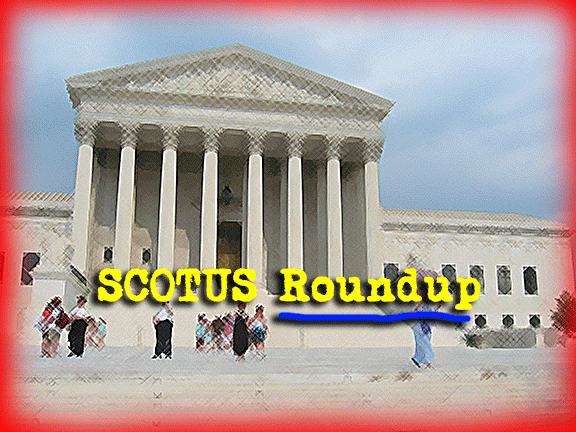The Supreme Court, nearing the end of the 2012 term, delivered several notable decisions on Monday.
PRE-MIRANDA RIGHTS (OR LACK THEREOF)
In a 5-4 split ruling, the Supreme Court held that a defendant’s silence before being read his or her Miranda rights can be used against them in court.
AP’s Jessie J. Holland has the story. Here’s a clip:
The 5-4 ruling comes in the case of Genovevo Salinas, who was convicted of a 1992 murder. During police questioning, and before he was arrested or read his Miranda rights, Salinas answered some questions but did not answer when asked if a shotgun he had access to would match up with the murder weapon.
Prosecutors in Texas used his silence on that question in convicting him of murder, saying it helped demonstrate his guilt. Salinas appealed, saying his Fifth Amendment rights to stay silent should have kept lawyers from using his silence against him in court. Texas courts disagreed, saying pre-Miranda silence is not protected by the Constitution.
The high court upheld that decision.
The Fifth Amendment protects Americans against forced self-incrimination, with the Supreme Court saying that prosecutors cannot comment on a defendant’s refusal to testify at trial. The courts have expanded that right to answering questions in police custody, with police required to tell people under arrest they have a right to remain silent without it being used in court.
Prosecutors argued that since Salinas was answering some questions — therefore not invoking his right to silence — and since he wasn’t under arrest and wasn’t compelled to speak, his silence on the incriminating question doesn’t get constitutional protection.
MANDATORY MINIMUM SENTENCING
In a second 5-4 ruling, the Supreme Court said that any finding of fact in a case that might increase the mandatory minimum sentence should not be determined by a judge, but instead, submitted to the jury for final say.
The Christian Science Monitor’s Warren Richey has the story. Here’s a clip:
The decision marks an important affirmation of the Sixth Amendment right to a jury trial, while establishing a new rule for judges seeking to balance sentencing guidelines with their own judicial discretion.
In the 5-to-4 decision, the high court overturned two existing legal precedents from 1986 and 2002 that permitted judges to make such determinations themselves by a preponderance of the evidence.
In overturning those precedents, the majority justices said any fact that increases a defendant’s sentence – including a mandatory minimum sentence – must be submitted to a jury under the higher standard of proof of beyond a reasonable doubt.
(This is surprisingly complicated to summarize, so you might want to read the whole story.)
AZ VOTER REGISTRATION
SCOTUS also struck down an Arizona voter registration law requiring voters to prove their citizenship—but it’s complicated.
UC Irvine Law Professor Richard L. Hasen clears up the confusion surrounding the high court’s decision in a post for the Daily Beast.
(More SCOTUS rulings are expected this Thursday.)
UPDATE ON CALIFORNIA PRISON POP. PROBLEMS
Gov. Jerry Brown’s monthly report to federal judges shows that CA’s prison crowding situation is slowly getting worse. Brown says he’s drafting a legislative strategy to get the population reduction closer to the number mandated by the court. (Last month, the governor’s office began the process to appeal the federal court order to the Supreme Court.)
LA Times’ Paige St. John has the story. Here are some clips:
In the state’s monthly progress report to federal judges, California acknowledges prison crowding has again begun to creep upward while Gov. Jerry Brown promises to seek legislative solutions “shortly.”
The state’s 33 prisons are now at more than 150% capacity, according to Monday’s report to the U.S. District courts. Three prisons — North Kern, the Central California Women’s Facility, and Wasco — are at or near 175% crowding.
[SNIP]For the second month in a row, Brown’s lawyers say the governor is “drafting legislative language” to take other steps to reduce crowding, including to keep more inmates in private prisons out of state, lease beds from county jails, and allow inmates who are elderly, medically frail or model prisoners to be released earlier.
EDITOR’S NOTE: DCFS BLUE RIBBON COMMISSION VOTE
Don’t forget that today—Tuesday— the LA County Board of Supervisors will consider a motion by Supervisor Mark Ridley-Thomas, cosponsored by Sup. Mike Antonovich, to create a Blue Ribbon Comission on Child Protection, in order to get to the bottom of why LA’s foster care system is still so disasterously dysfuntional.
(Here’s our earlier story on the motion.)

